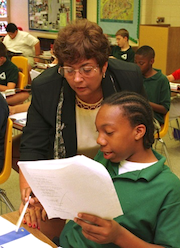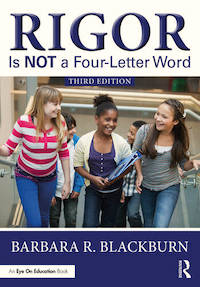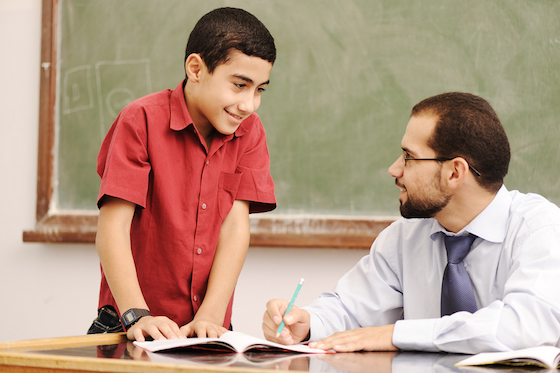The Eight Essentials of Good Student Feedback

Feedback is an essential component of meaningful assessment, whether we offer it in a formal presentation, or informally in our daily interactions with students.
Whether you provide it orally or in written form – in a sit-down meeting or during a busy classroom activity – good feedback is crucial for students to continuously improve their work.
Here are eight characteristics of good feedback that I believe are essential practices for effective teaching.
Good Feedback Is Fair
First, effective feedback is fair. In other words, it’s not biased toward or against the student. For example, one teacher I worked with always graded his “best” students easier than his “worst” students. He assumed that because they were “smart” (his words), they would always do a better job. That’s not fair.
Good Feedback Encourages Growth
Next, you want your feedback to encourage growth. Your comments should focus on how a student can improve in the future. Sometimes it’s easy to just criticize, without providing suggestions for change. Remember to always provide options for improvement.
Good Feedback Acknowledges Effort
Always acknowledge what your students have done. That can be hard, particularly when a student’s work isn’t at an acceptable level. However, especially when a student is struggling, you need to recognize their efforts. If you don’t, they won’t continue to try.
Good Feedback Is Specific
Are you in the habit of providing general feedback to your students? For example, do you ever say things like “That’s good” or “Great job” or “Try again”? If you don’t provide specific feedback, students don’t know what was good (or not good enough) nor what to do next. We typically use general feedback because it’s easy and quick and seems affirming, but if we want students to improve, we need to give them specific ideas of what they’ve accomplished and where to go from here.
Good Feedback Offers Examples

Good Feedback Is Accurate
Teacher feedback should be accurate. One of my student teachers corrected a set of student papers and shared them with me. On several, she had marked items as wrong when they were in fact right. Although the students had used an alternative method of solving the problems, they did find the correct answer. However, because they didn’t follow the “right steps”, the student teacher counted them as incorrect. Look for accuracy, even if it comes in a different format. If the method is really important, have that discussion, but don’t say “wrong” when the answer is right. It creates confusion.
Good Feedback Is Timely
Effective feedback is also timely. One of my struggles as a teacher was keeping up with grading and assessment. There were so many things to do, I was constantly behind. Giving feedback, especially on writing, took time, and I wasn’t as quick as I would have liked. But if we wait too long to provide feedback, it doesn’t mean anything to students. We want the feedback to come while the learning experience is still fresh in their minds.
Good Feedback Is Kind

We’ve all experienced good feedback
If we think back to those times when a teacher, coach or instructor really helped us learn a lot, we realize that the feedback we received was most often fair, encouraging, specific, well-illustrated, timely and kind. By paying attention to these same characteristics in our own teaching, we can help our students learn a lot, too.

Barbara’s latest book, Scaffolding for Success: Helping Learners Meet Rigorous Expectations Across the Curriculum was published in September 2024 Routledge/Eye on Education.
































